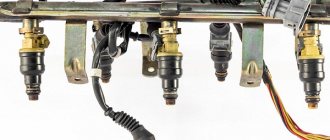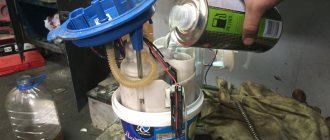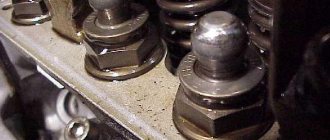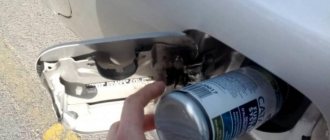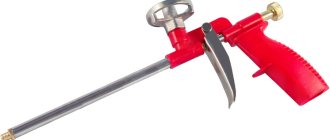It's no secret that in recent years the diesel engine has been considered by a growing number of motorists as a much more preferable type of internal combustion engine compared to conventional gasoline units.
As a rule, such trends manifest themselves in the case of purchasing a new car, and not a commercial one, where the diesel engine has already been firmly established for a long time, but a passenger car. It is quite obvious that against the backdrop of the fuel and economic crisis, as well as thanks to the development of engine technology, the advantages of diesel have come to the fore.
Low fuel consumption, efficiency and high torque levels at the “lower” range today attract consumers more than high speeds, power and a slightly higher maximum speed of a car with a gasoline analogue.
Naturally, the lower cost of diesel fuel along with its low consumption cannot but rejoice. However, we should not forget that, despite its reliability, a diesel engine still requires increased attention. More precisely, we are talking about the air and fuel supply system.
In this article, we intend to talk about when and why cleaning the intake manifold (the intake tract of a diesel engine) is needed, what signs indicate that the engine intake tract needs cleaning, how this procedure is carried out and what is needed to properly clean the intake tract of a diesel engine. motor.
Why do you need to clean the diesel intake from soot?
Among the reasons for air pollution in the countries of the former CIS, one of the most important is the low quality of fuel, its low cetane number and additional impurities. All this entails increased formation of soot and coke. We must not forget that to reduce exhaust toxicity, modern diesel engines are equipped with an EGR valve.
When the engine load is light, through this valve some of the combustion products enter the intake tract and mix with the air supplied to the combustion chambers. About 15 percent of exhaust gases are contained in the total mass of the fuel-air mixture. Since there is no oxygen in the exhaust, the combustion time of the mixture slows down, and at the same time the combustion temperature decreases. This leads to a decrease in nitrogen oxide in the exhaust.
In addition to environmental functions, the recirculation system reduces the risk of detonation when the diesel engine runs on a lean mixture. This system is turned off when the engine is running at a high constant load.
The EGR valve is installed not only on diesel engines. BMW owners often encounter problems - the sensor in the manifold becomes covered with dirt and does not work properly. But practice shows that cleaning the BMW X5 H57 intake manifold helps resolve the issue.
Not only soot, but also oily dirt is formed in the intake, since the manifold is also contaminated with products from the crankcase ventilation. So, this dirt actively contaminates the entire manifold, including the EGR valve. If the latter hangs or completely jams, the entire volume of exhaust gases may go into the intake.
Intake system. How it works and what may not work correctly
The intake system (another name is the intake system) is designed to admit the required amount of air into the engine and form a fuel-air mixture. The term "intake system" appeared with the development of internal combustion engine design, especially with the advent of direct fuel injection. The equipment for feeding the engine with air is no longer just an air duct, but has become a separate system.
In its operation, the intake system interacts with many engine systems, including:
• injection system; • exhaust gas recirculation system; • gasoline vapor recovery system; • vacuum brake booster.
The interaction of the listed systems and a number of other systems is ensured by the engine control system.
To improve the filling of cylinders with air and increase power, turbocharging is used in the design of the intake system of modern gasoline and diesel engines.
The intake system has the following general arrangement:
• air intake;• air filter;• throttle valve;• intake manifold;• intake flaps (on certain engine designs);• connecting pipes;• structural elements of the engine control system.
The air intake provides air intake from the atmosphere and is a pipe of a certain shape.
The air filter is used to clean the air from mechanical particles. The filter element is made of special paper and is placed in a separate housing. The air filter element is a consumable item, i.e. has a limited service life. Depending on the operating conditions of the vehicle, the service life of the filter element may vary.
The throttle valve regulates the amount of incoming air in accordance with the amount of fuel injected. On modern engines, the throttle valve is driven by an electric motor and has no mechanical connection with the gas pedal.
The intake manifold distributes the air flow among the engine cylinders and gives it the necessary movement. The vacuum generated in the intake manifold is used to operate the vacuum brake booster, as well as to drive the intake flaps.
On engines with direct fuel injection, intake flaps are installed in addition to the throttle valve. They provide the mixture formation process by dividing the air into two inlet channels. One channel is blocked by a damper, and air flows through the other without hindrance. The intake flaps are mounted on a common shaft, which is rotated using a vacuum or electric drive.
The operation of the intake system is ensured by the engine management system. The structural elements of the engine control system that are used in the operation of the intake system can be divided into three groups:
• input sensors; • control unit; • actuators.
For example, the intake system of an engine with direct fuel injection has the following sensors:
• air flow meter;• intake air temperature sensor;• throttle position sensor;• pressure sensor in the intake manifold;• intake damper position sensor;• recirculation valve position sensor;• pressure sensor in the vacuum brake booster line.
The air mass meter and the intake air temperature sensor are used to determine the load on the engine. On some engine models, an air flow meter is not installed. Its functions are performed by a pressure sensor in the intake manifold. When installed together, the air mass meter and the pressure sensor in the intake manifold duplicate each other. The intake manifold pressure sensor is also used in the operation of the exhaust gas recirculation system to calculate the amount of gases bypassed. The engine load is determined using an intake air temperature sensor and an additional atmospheric pressure sensor. The remaining sensors ensure the operation of the corresponding systems.
The operation of the intake system is controlled by the following actuators:
• Throttle valve control unit; • Intake flap actuator motor or vacuum flap actuator control valve (on direct injection engines); • Evaporative emission system shut-off valve; • Exhaust gas recirculation system solenoid valve.
The actuators are activated by the engine control unit.
Differences in collectors by motor type
The main difference between intake manifolds on diesel power units is that only air moves through them. On a gasoline engine, everything is a little different. In a carburetor engine, there will be a ready-made fuel mixture in the manifold. If the engine is injection, then the mixture is formed directly inside it.
On carburetor and diesel engines, the intake is simply a system of pipes, inside of which there is minimal aerodynamic resistance. In an injection engine, the intake manifold is created by analogy with a Venturi tube. This is an ordinary sprayer, where the air flow carries the liquid with it and then sprays it. Due to this, it was possible to achieve better atomization and mixing of the air-fuel mixture than direct injection of liquid gasoline into the combustion chamber.
EGR functionality revision
During the inspection, tubes, wires, and other components are subject to inspection. When equipped with a pneumatic valve, a vacuum pump is used for starting. For a comprehensive check, special equipment is suitable that allows you to identify the error code. To carry out diagnostics, you need to know the technical parameters of the device in order to find discrepancies in the declared and final information.
Inspection steps:
- Disconnecting vacuum hoses.
- Blowing through the apparatus until no air passes through it.
- Disconnecting the connector from the solenoid valve.
- Supplying power from the battery to the device via wires.
If the inspection reveals such a breakdown that the device cannot be used, then you need to purchase and install a new one. Often a plug from an existing unit is enough.
Cleaning with removal
If you hear characteristic knocking sounds from the intake manifold while the engine is running, this indicates that there is dirt in the manifold. Cleaning must be performed to restore normal operation. Let's see how this is done using the example of cleaning the Astra intake manifold.
First of all, the car is lifted on a lift. Then unscrew the manifold bolt that secures it to the ramp. Remove the throttle valve, remove the sensors and pipes. Now unscrew the bolts securing the manifold to the engine and dismantle it. Remove the cover.
The manifold consists of two parts - to separate them, unscrew the bolts and disconnect the assembly. Cleaning is carried out in a bucket of white spirit. Dirt is removed mechanically with a brush. Those parts that will be adjacent to each other are lubricated. While the manifold is removed, you can also clean the intake manifold flaps and replace the gaskets.
Advice from experienced drivers
- Effective removal of contaminants with a flow of granules.
- A special abrasive ensures stable cleaning quality.
- The specific, non-sharp geometry of the granules, as well as their internal structure, makes it possible to remove contaminants with high quality, while maintaining the surface of the parts.
- The neutralizer allows you to effectively remove slag residues after cleaning.
- The nozzles in the set are selected for various channel shapes.
Experts recommend combining this cleaning procedure with an oil change. This allows you to fill not only the cylinder head cavity with cleaning foam, but also the entire combustion chamber. Thanks to this, it is cleaned and the piston rings are decarbonized.
Folk remedies Recipes for masks At home Hair loss in women How to stimulate growth Causes of hair loss Hair loss in men Review of vitamins Helpful tips
How can a collector affect engine performance?
When the engine operates at speeds close to maximum with the accelerator pedal fully depressed, the air inside moves almost at the speed of sound. At this speed, any turns and bumps can become a serious obstacle - the resistance to air flow increases. Less air enters the cylinders and power drops. This may cause the fuel mixture to become too lean. Its combustion rate is many times higher than that of a conventional mixture with normal stoichiometry. Therefore, the lean mixture explodes. This leads to serious damage to valves, piston parts and other engine components.
Cleaning the intake manifold will help remove these obstructions, allowing airflow to flow as engineers intended. The mixture will not become lean, and the valves will not burn out.
Nagar
Tars and carbon deposits form on gasoline engines when driving at low speeds. In this mode, the motor consumes a minimum amount of air. Its speed of movement is also insignificant. Some of the fuel settles on the walls inside the manifold. Then the volatile substances evaporate, and the resin remains and cocos. As a result, growths form on the walls, increasing aerodynamic resistance to air movement. This problem is solved by cleaning the intake manifold. The removed part is cleaned with special chemical compounds, as well as mechanically with special brushes.
Design features
The intake system has been modernized many times over a long period, due to which it was possible to increase engine power. The structure intended for mixing, supplying and distributing the fuel mixture consists of the following elements:
- Patrubkov.
- Cases.
- Throttle valve.
- Silencer.
- Gaskets.
- Collector.
The manifold is an important part of a complex system that supplies the fuel mixture. Despite the simplicity of the design, it also requires periodic maintenance
The manifold is mounted on the cylinder head; various temperature and pressure control sensors can be placed on it. Modern cars have a huge number of different sensors that collect information and transmit it for processing.
The service suggests cleaning the throttle valve. Are they getting divorced?
Okay, what is a throttle body anyway?
Let's remember the principles of operation of the combustion chamber in an engine. Fuel enters the chamber, which needs to be ignited, and in order for it to start burning, it needs to be mixed with air. This is where the throttle valve comes in: it regulates the amount of air entering the engine and allows a small amount of energy to be consumed at low speeds. If you press the gas pedal, the amount of incoming fuel will increase, and, accordingly, you need to increase the amount of air so that the fuel burns more efficiently. Then the damper opens and air is sucked into the engine from the atmosphere.
In an ideal world, where there is no low-quality gasoline, no dust and all technical regulations are observed, the throttle valve would not need to be touched at all. But we live in rather harsh conditions for engines, so due to a lack of tightness in the car’s air system and a weak fuel filter, carbon and dirt can settle on the throttle, which sometimes need to be cleaned off. If you do not do this, the damper will begin to stick, and because of this, starting the engine may be difficult, and the speed will fluctuate.
Therefore, if you have already traveled more than tens of thousands of kilometers, then it is worth, at least for the sake of interest, to trust the master and clean the throttle. In most cases, the effect of cleaning is immediately felt.
How do you know when it’s time to clean the throttle?
You can visually assess the condition of the throttle yourself by moving the throttle to a vertical position by pressing the accelerator pedal, and you will need the help of a friend. Or remove the throttle and examine its condition, but we will talk about this in a few paragraphs. Many car enthusiasts rely on indirect signs - the engine does not start as quickly as before, the idle speed fluctuates or the dynamics disappear altogether and the speed “hangs” at the same level. If you have collected at least two points, it is better to address this issue. Otherwise it may come back to haunt you in the future.
How do you usually clean the throttle body?
If we go the more painstaking and thorough route, we will need a screwdriver, a set of wrenches, carburetor cleaner and rags. Yes, yes, carburetor cleaner, even if you have an injection car. Historically, carburetor cars were first invented, which also required timely cleaning. Therefore, chemists came up with a carburetor cleaner that perfectly dissolves all the slag that has accumulated in it. Since the nature of the origin of the deposit is the same for both carburetor and injection cars, the name “carburetor cleaner” has stuck around.
Let's return to the story of cleaning the damper.
- Remove the air system pipe leading from the air filter to the throttle body.
- Unscrew the throttle valve mounting bolts.
- Disconnect the throttle position sensors.
- That's it, the throttle is in your hands. Be sure to cover the intake manifold with a rag to prevent dirt from getting in there.
Just a small matter: spray carburetor cleaner on the choke. For example, we used a product from Astrohim. It does not have a pungent odor and does a good job of dissolving deposits on the damper. Let the mixture soak in a little and start scrubbing away the plaque.
But! Do not use any abrasive materials when cleaning the valve and generally do not overdo it with friction force. This way, you risk removing useful deposits and losing the tightness of the system or disrupting the smooth operation, causing the damper to move jerkily.
After the procedures are completed, install everything in reverse order.
Possible faults
A malfunction of the intake system element in question causes failure of sensitive parts. The maximum load is placed on the damper. Therefore, it fails more often than others.
Clogging occurs most often. This is due to the low quality of the fuel, as well as the large amount of pollutants in the air. This reason leads to the following problems:
- Power decreases and fuel consumption increases due to the ingress of rarefied air in small quantities.
- The structure becomes very hot, which can lead to cracks and other defects. The use of modern materials reduces the likelihood of cracks and other defects, but if you reduce the cooling efficiency, such a problem cannot be avoided.
- The effectiveness of the gasket used is reduced. High temperatures also have a negative impact on the gasket. The loss of basic properties leads to the appearance of a whistle and rapid wear of the internal combustion engine structure due to the ingress of unfiltered air.
Gaskets
They tend to lose their tightness if the engine overheats. This also happens when the fastening nuts are loosened.
You can easily check the gaskets for leaks. To do this, you need to cover 10 percent of the air filter duct when the engine is idling. If the engine speed has not decreased, then there is an air leak. If the speed, on the contrary, has increased, then we can say that one or more gaskets have completely failed and need to be replaced.
Cleaning the structure
It is necessary to clean the intake manifold regularly, which will significantly extend its service life. The part in question is expensive; if used for a long time in a faulty state, important elements of the internal combustion engine may fail. It is recommended to carry out cleaning if knocking occurs. You can do the job as follows:
- The car is placed on a lift. You can carry out the work in a regular garage, but when using a lift, the dismantling process is greatly simplified.
- Before carrying out work, blow out the engine with compressed air. In some cases, mechanical cleaning of the outer surface is carried out, which eliminates the possibility of dust and sand getting inside the engine during assembly.
- A plastic casing is often installed to protect the fuel supply system. It is secured using latches or other fasteners. Plastic protection significantly extends the service life of the device.
- In many cases, the collector is secured with a special screw. This part must withstand high pressure and not change its position when vibration or other loads occur. Therefore, the intake distribution manifold is fixed to the frame. If the previous dismantling was carried out a long time ago, then there is a possibility of oxidation of the fastening element. You can make it easier to unscrew it by using special substances.
- The next step is to remove the throttle body. This work must be done carefully, since the structure is susceptible to mechanical stress, and even minor deformation will lead to malfunction. If the throttle valve is damaged, it must be completely replaced. Read about how to clean the throttle valve here.
- All sensors and tubes are removed. Before further work, you need to disconnect the sensors. As a rule, to do this, it is enough to disconnect the chips. Tubes can be attached in a variety of ways; in most cases, clamps are used. You should be careful with chips, as they are made using plastic and cannot withstand significant mechanical stress.
- The collector is attached to the motor with several bolts. If the car has been in use for many years, then special anti-corrosion compounds must be used to unscrew them.
- After removing the device, you can begin disassembling it. In most cases, the manifold consists of two halves that are connected by two bolts. When dismantling, the gasket is removed (if it is not damaged, it is reused).
- After separation, the two halves are placed in a container with a special solution. Dirt practically eats into the material used during the manufacture of the collector. Therefore, you need to use a brush for cleaning. If it is heavily soiled, you will have to work hard: various tools and special cleaning agents are used.
- After mechanical cleaning, the structure is blown with compressed air. Due to this, it is possible to remove small particles that remain on the surface.
- Before assembling all elements, they should be coated with sealant. Such a substance increases the degree of sealing of the structure. Cold welding can be used, since such a substance, after hardening, can withstand high temperatures and pressure.
You can clean the intake manifold of soot within a few hours. After completing the work, assembly is carried out in the reverse order
When choosing what to use to flush the intake manifold, it is recommended to pay attention to special products that are commercially available. If desired, you can create the required composition from scrap materials
It is worth considering that the product used only simplifies the separation of carbon deposits from the surface.
Cleaning the intake tract of a diesel engine
As you can see, it is almost impossible to get rid of all the factors and causes that lead to intake contamination. It turns out that to solve the problem, the best way is to comprehensively clean the intake manifold and other intake elements.
You can go two ways:
- disassemble the intake and physically remove dirt and soot;
- use cleaning methods without disassembling the internal combustion engine;
We also recommend reading the article on how to clean the particulate filter on a diesel engine. From this article you will learn about the features and nuances of the particulate filter cleaning process.
Naturally, most drivers will choose the second method. So, to achieve the desired result, an intake tract cleaner for diesel engines is used, which is a specially designed product to combat oily deposits of dirt and soot.
The product is supplied to the inlet under pressure using a special installation with a compressor. This allows you to carry out all cleaning work without having to disassemble the motor and remove parts. In this case, it is possible to clean the intake manifold, remove deposits, remove soot and carbon deposits from the intake valves, etc.
Simply put, the device is connected to the intake system, then the engine is started and the engine is allowed to run for about 120 minutes. At the end of the cleaning procedure, the diesel engine begins to operate more stably, fuel consumption decreases, the power unit stops smoking, power returns, and throttle response appears.
Main signs of pollution
It is recommended to periodically clean the interior surface. This is due to the fact that it is almost impossible to avoid the formation of soot on the surface; during long-term operation of the car, the collector becomes covered with a layer of soot several millimeters thick. Some signs may also indicate the need for cleaning:
- All carbon deposits that form remain inside the structure and accumulate over time, reducing throughput.
- Fuel consumption increases significantly. In order for the consumption to be within the normal range, the combustible mixture must consist of a certain amount of fuel and air. In addition, an incorrectly enriched mixture reduces the main performance indicators of the internal combustion engine.
- Power decreases and acceleration dynamics are lost. It is quite difficult to determine the drop in engine power, since it occurs gradually. Only when diagnosing a vehicle can the power rating be determined.
- At low speeds, vibration and shaking may occur. Due to a decrease in throughput, pressure increases, which leads to vibration.
- The car idles poorly and the revs drop. A situation often occurs when the engine almost completely stalls at idle. This also occurs when the fuel mixture is poorly enriched.
- In some cases, contaminants crystallize, break off, and end up on the valve. Contamination of the valves complicates their movement, causing strong knocking and noise. The accumulated mass on the valves complicates their movement.
Severe contamination of the intake system occurs due to high oil consumption when the cylinder-piston group is damaged. This further aggravates the current situation; the engine finally loses its quality.
Read with this
- Intake manifold flap control valve
- Methods for separating mixtures
- Rich fuel mixture, signs, causes
- Reasons for firing shots into a silencer: is it dangerous?
- Wheel width
- Direct fuel injection system in gasoline engines: operating principle
- Reasons for increased fuel consumption. why is fuel consumption increased?
- egr valve
- Is LPG harmful to the engine?
- Oil dripping onto the exhaust manifold
Shape and volumetric efficiency
One of the most important parameters of the intake manifold that determines its efficiency is its shape. The basic rule that all engineers adhere to is that the intake manifold should not have any angular shapes, as this will provoke pressure drops and, as a result, worse filling of the cylinders with air or working mixture. Therefore, all collectors have smooth transitions between segments and rounded shapes.
The vast majority of current collectors use runners. They are separate pipes diverging from the central entrance of the manifold to all available intake channels in the cylinder head. Their task is to use a phenomenon called Helmholtz resonance. The operating principle of the design is as follows.
The smaller the diameter of the runner, the greater the change in pressure due to resonant air vibrations. As the piston moves down, the pressure at the outlet of the runner decreases. This low pressure pulse then travels to the manifold inlet where it turns into a high pressure pulse that travels in the opposite direction through the runner and valve, after which the valve closes.
To achieve the maximum effect from resonance, the intake valve must open at a strictly defined moment, otherwise the result will be the opposite. This is quite difficult to achieve. The gas distribution mechanism is a dynamic unit, and its operating mode is directly dependent on the crankshaft speed. The pulses are synchronized statically, the synchronization depends on the length of the runners. The problem is partially solved by selecting the length for a certain speed range at which the greatest torque is achieved. Another option is the use of systems for changing the geometry of the intake manifold and electronic timing control.
